📖 Comparative Religions: Essential Concepts for Reading Comprehension
Comparative religions examine the beliefs, practices, and traditions of various religious systems, exploring their similarities, differences, and cultural significance. This field fosters a deeper understanding of how religions shape societies, ethics, and worldviews. RC passages on this topic often analyze themes like sacred texts, rituals, and the interplay between faith and reason. By mastering these concepts, readers can critically evaluate religious diversity and its impact on human thought.
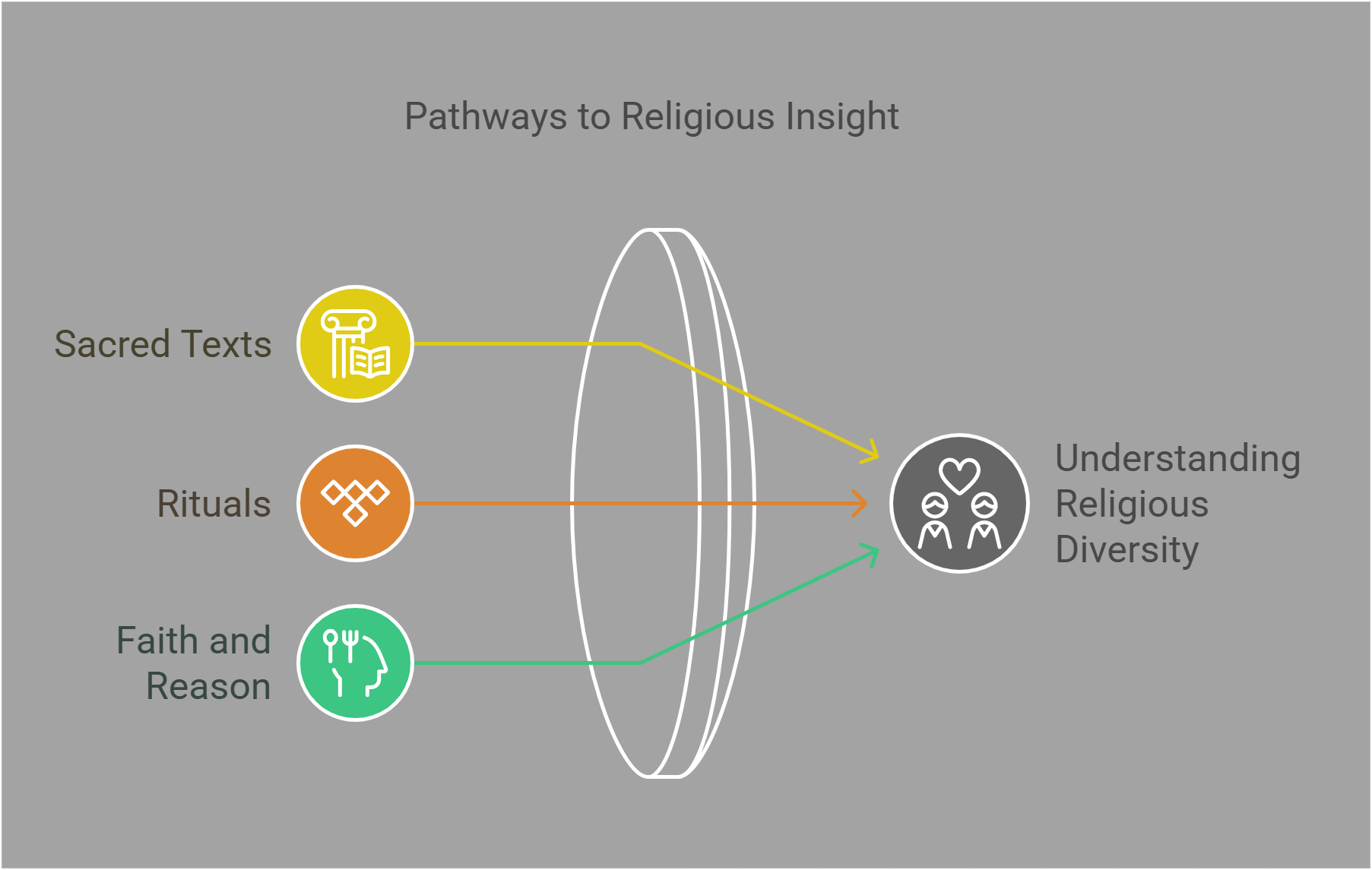
🔑 Key Concepts
This guide explores the following essential concepts in comparative religions:
- Monotheism vs. Polytheism
- Rituals
- Sacred Texts
- Comparative Mythology
- Secularism
- Religious Ethics
- Pilgrimage
- Shamanism
- Religious Syncretism
- Faith vs. Reason
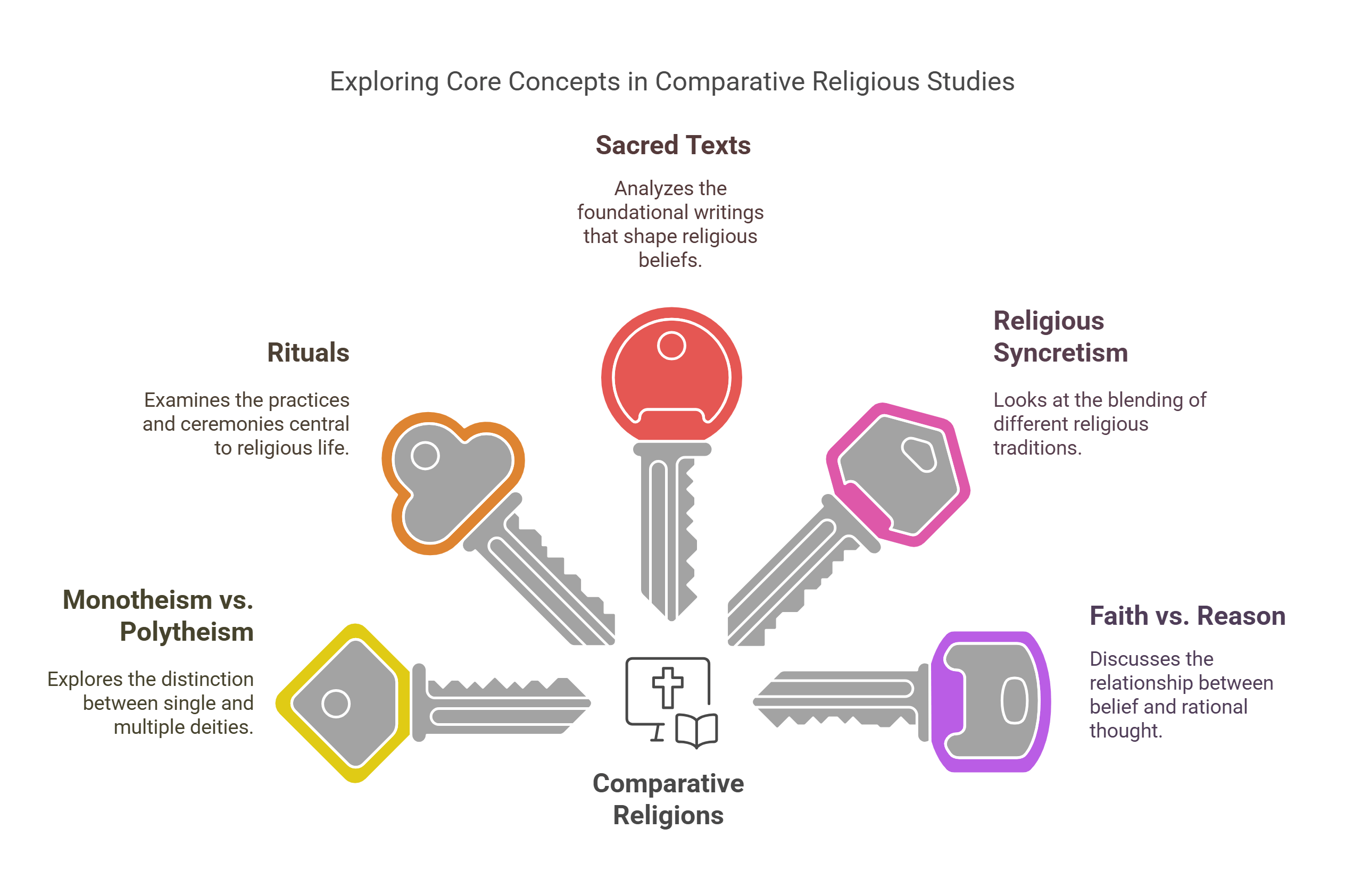
🔍 Detailed Explanations
1. Monotheism vs. Polytheism
Detailed Explanation:
- Monotheism: Belief in a single, all-powerful deity who is often seen as the creator and sustainer of the universe.
- Examples: Christianity, Islam, and Judaism.
- Key Characteristics: One ultimate authority, often omniscient and omnipresent, guiding the moral and spiritual lives of followers.
- Polytheism: Involves the worship of multiple gods, each often associated with specific aspects of life, nature, or the cosmos.
- Examples: Hinduism, ancient Greek and Roman religions, and Shinto.
- Key Characteristics: Deities may have human-like traits and roles, with stories and rituals that explain natural phenomena and cultural values.
Cultural and Philosophical Implications:
- Monotheism tends to promote universal moral codes and centralized worship.
- Polytheism reflects a diversity of perspectives, often emphasizing harmony with nature and the balance between forces.
Example: The Christian doctrine of the Trinity describes one God in three persons, while Hinduism worships deities like Vishnu, Shiva, and Lakshmi as aspects of a greater divine reality.
Explained Simply: Monotheism is like seeing the universe ruled by a single sovereign, while polytheism envisions a council of specialized rulers, each managing their domain.
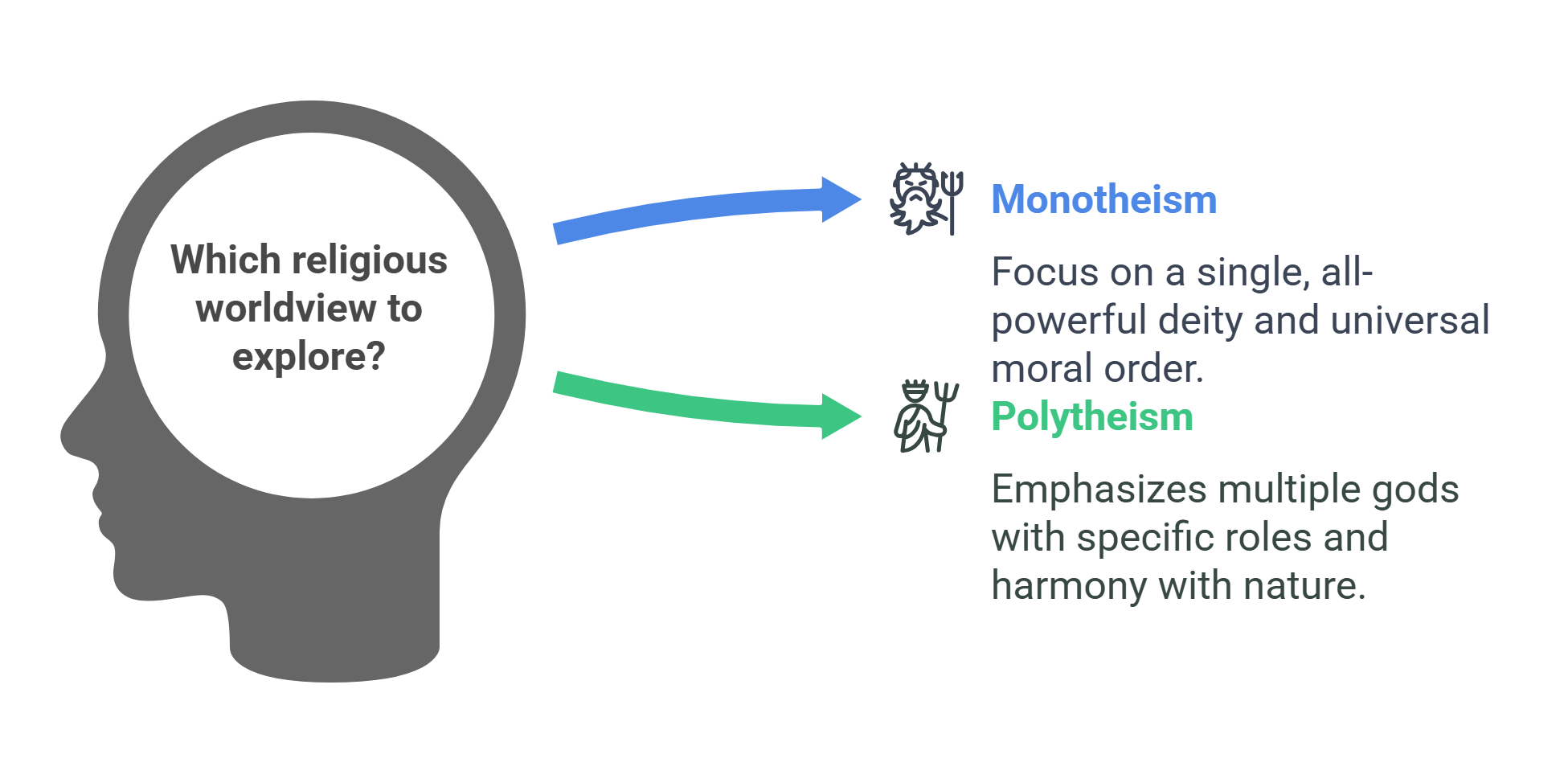
2. Rituals
Detailed Explanation: Rituals are structured, symbolic acts performed in religious or cultural settings to express beliefs, strengthen community bonds, or seek spiritual connection.
- Types of Rituals:
- Life-Cycle Rituals (Rites of Passage): Mark major life transitions like birth, marriage, and death (e.g., Hindu wedding ceremonies or Christian baptisms).
- Worship and Devotional Rituals: Include prayer, meditation, offerings, and sacrifices to honor deities or seek blessings.
- Seasonal Rituals: Celebrate natural cycles, such as harvest festivals or solstice observances.
- Purpose:
- Provide structure and meaning in individual and communal lives.
- Reinforce religious identity and shared values.
- Act as a medium for communication with the divine.
- Example: Lighting the menorah during Hanukkah or participating in the Islamic hajj are examples of rituals that connect participants to their faith’s history and community.
Explained Simply: Rituals are like sacred routines that bring individuals closer to their beliefs and each other.
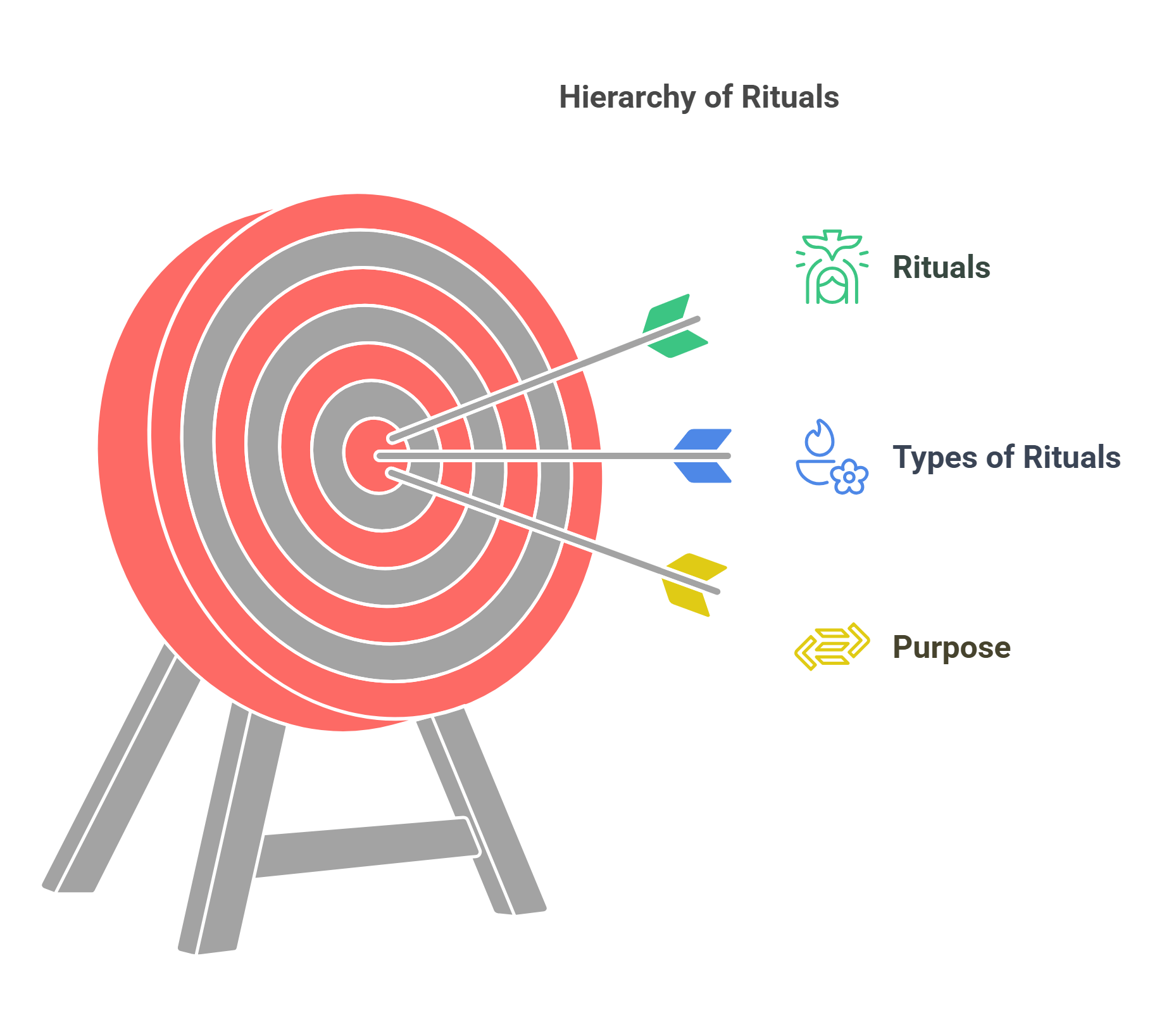
3. Sacred Texts
Detailed Explanation: Sacred texts are writings considered divinely inspired or foundational to a religious tradition. They often contain teachings, laws, hymns, and narratives that guide worship, ethics, and community life.
- Examples of Sacred Texts:
- Christianity: The Bible, comprising the Old and New Testaments, provides spiritual guidance and moral teachings.
- Islam: The Quran, believed to be the word of God revealed to Prophet Muhammad, emphasizes submission to God’s will.
- Hinduism: The Vedas, Upanishads, and Bhagavad Gita offer philosophical insights and rituals.
- Interpretation and Influence:
- Sacred texts can be literal, metaphorical, or contextual, depending on the tradition.
- They shape legal systems (e.g., Sharia law) and cultural values.
- Example: The Ten Commandments in the Bible serve as a moral framework for adherents of Judaism and Christianity.
Explained Simply: Sacred texts are like instruction manuals for faith, offering guidance for spiritual and practical living.
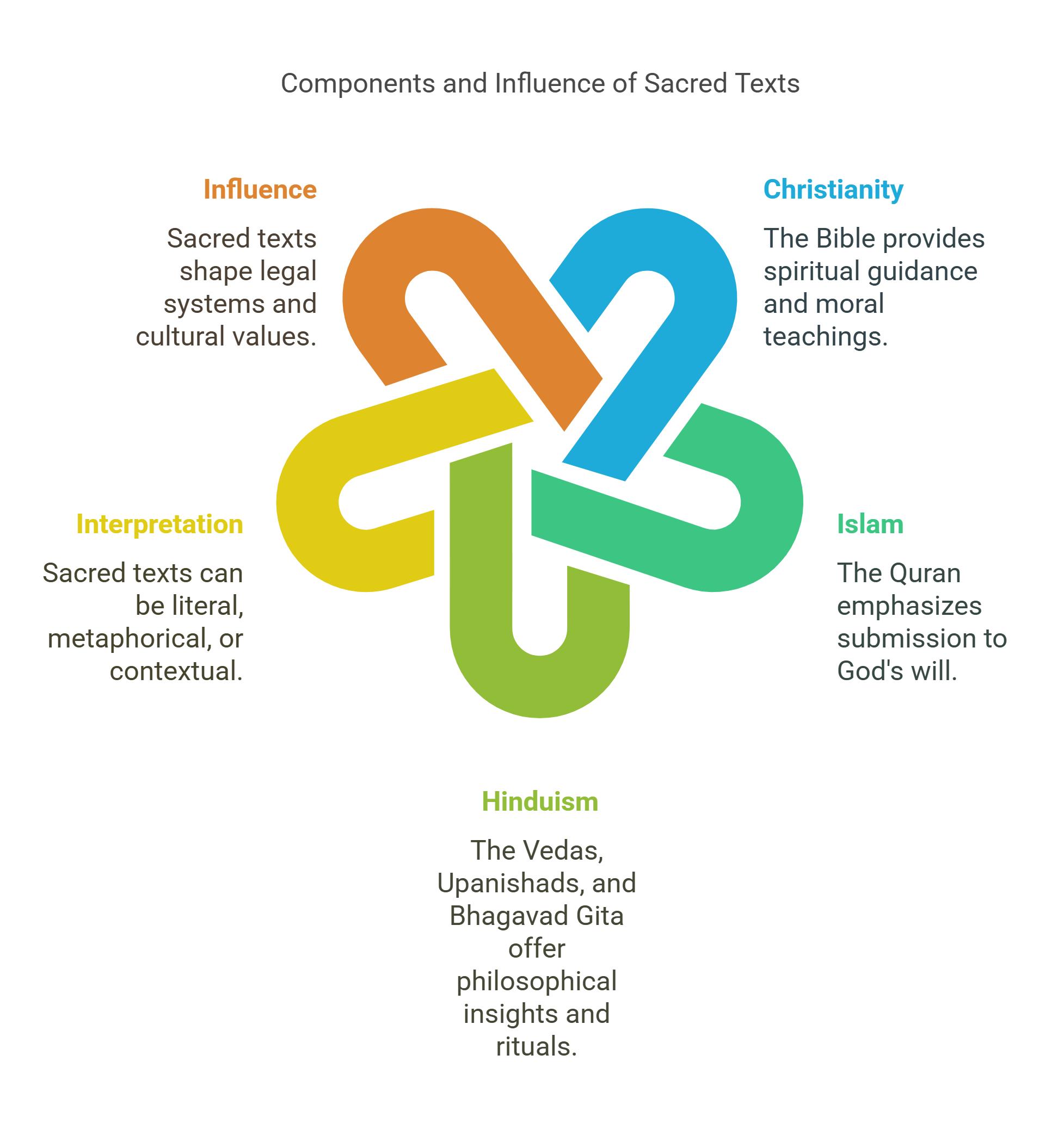
4. Comparative Mythology
Detailed Explanation: Comparative mythology examines myths across different cultures to identify common themes, archetypes, and motifs. These shared elements reveal universal human concerns, such as creation, morality, and the hero’s journey.
- Key Themes in Myths:
- Creation Myths: Stories of how the universe, Earth, or humanity began (e.g., the Genesis creation story in the Bible vs. the Norse myth of Ymir).
- Flood Myths: Found in many cultures, such as Noah’s Ark (Bible) and the Epic of Gilgamesh (Mesopotamia).
- Hero’s Journey: A pattern of adventure, trials, and transformation seen in stories like Odysseus in Greek mythology and Rama in Hindu epics.
- Purpose of Myths:
- Explain natural phenomena and cultural practices.
- Provide moral lessons or reflections on human behavior.
- Example: The story of Prometheus stealing fire for humanity in Greek mythology parallels themes of innovation and sacrifice found in other cultures.
Explained Simply: Comparative mythology is like finding the same story told in different languages, reflecting universal truths.
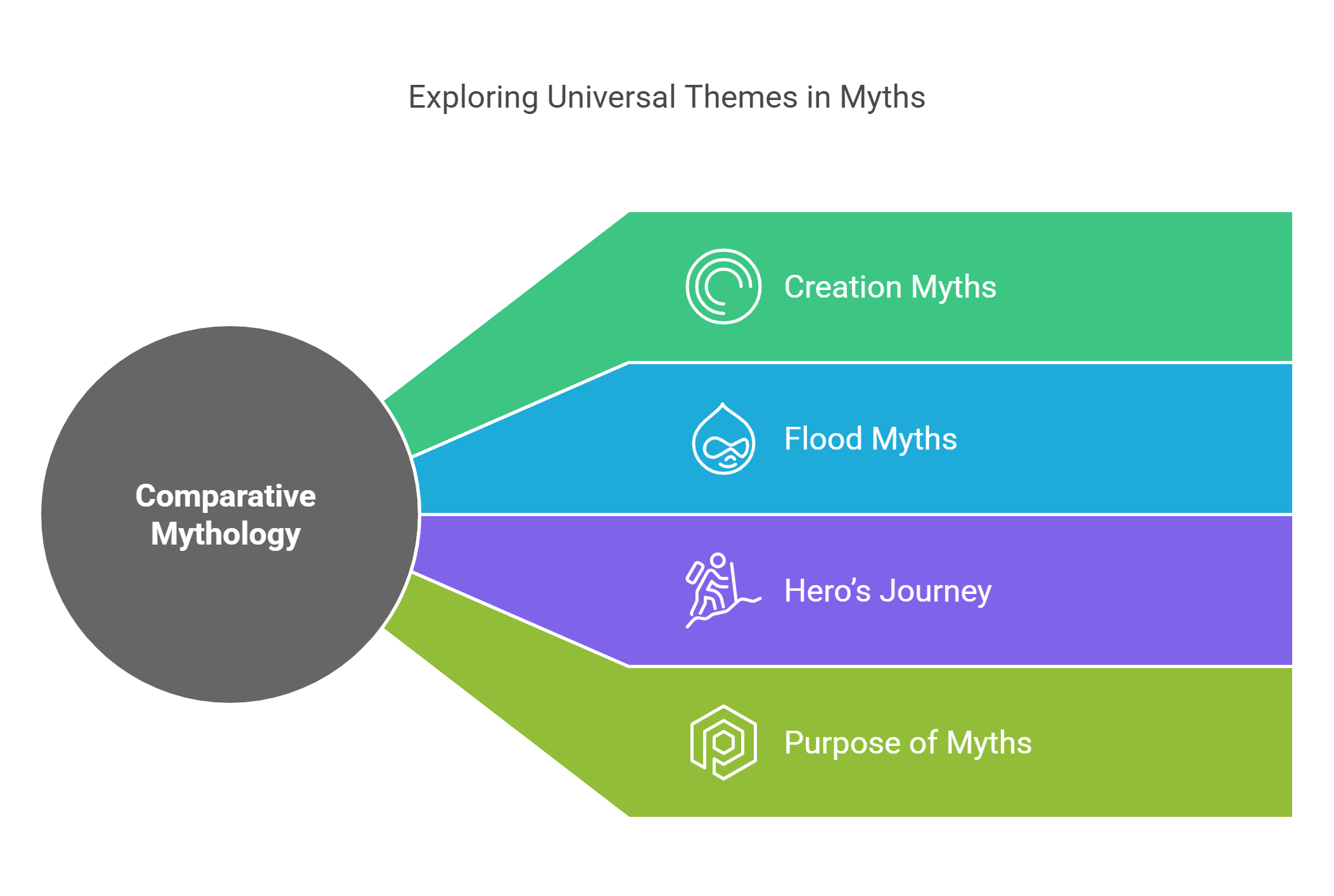
5. Secularism
Detailed Explanation: Secularism advocates for the separation of religion from political, legal, and educational systems, ensuring that governance remains neutral regarding religious beliefs.
- Key Features:
- Ensures equality by preventing state favoritism toward any religion.
- Promotes public policies based on rationality and shared human values rather than religious doctrines.
- Types of Secularism:
- Hard Secularism: Strict separation of religion and state, as in France’s concept of laïcité.
- Soft Secularism: Allows for religious expression within public life, as in India’s inclusive secular model.
- Challenges:
- Balancing religious freedom with public neutrality.
- Addressing tensions in societies where religion heavily influences cultural identity.
- Example: In the United States, the First Amendment ensures religious freedom while prohibiting government establishment of religion.
Explained Simply: Secularism is like a referee ensuring all religions (or none) play fairly without dominating the rules of public life.
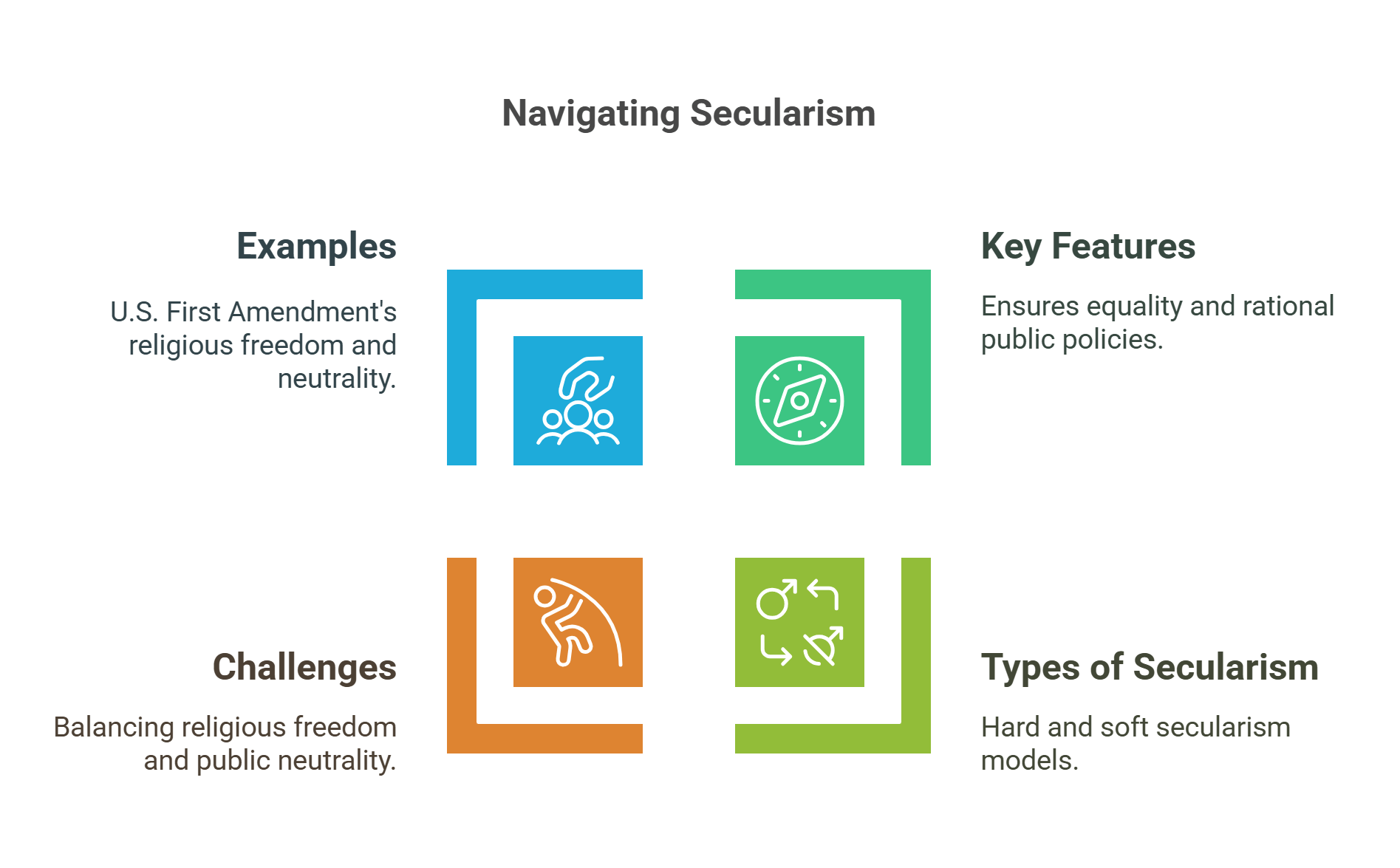
6. Religious Ethics
Detailed Explanation: Religious ethics refers to moral principles and values derived from religious teachings, which guide behavior and decision-making.
- Key Features:
- Divine Command Ethics: Actions are deemed right or wrong based on divine will (e.g., the Ten Commandments in Christianity and Judaism).
- Virtue Ethics: Emphasizes character and virtues like compassion, honesty, and humility (e.g., Buddhism’s Eightfold Path).
- Consequential Ethics: Evaluates actions based on their outcomes, often tied to spiritual consequences like karma or sin.
- Applications:
- Influences personal conduct, social norms, and legal systems.
- Shapes responses to ethical dilemmas, such as bioethics, environmental stewardship, and justice.
- Example: Islam’s emphasis on zakat (charity) encourages ethical wealth distribution.
Explained Simply: Religious ethics are like moral compasses calibrated by faith, guiding believers to align their actions with spiritual values.
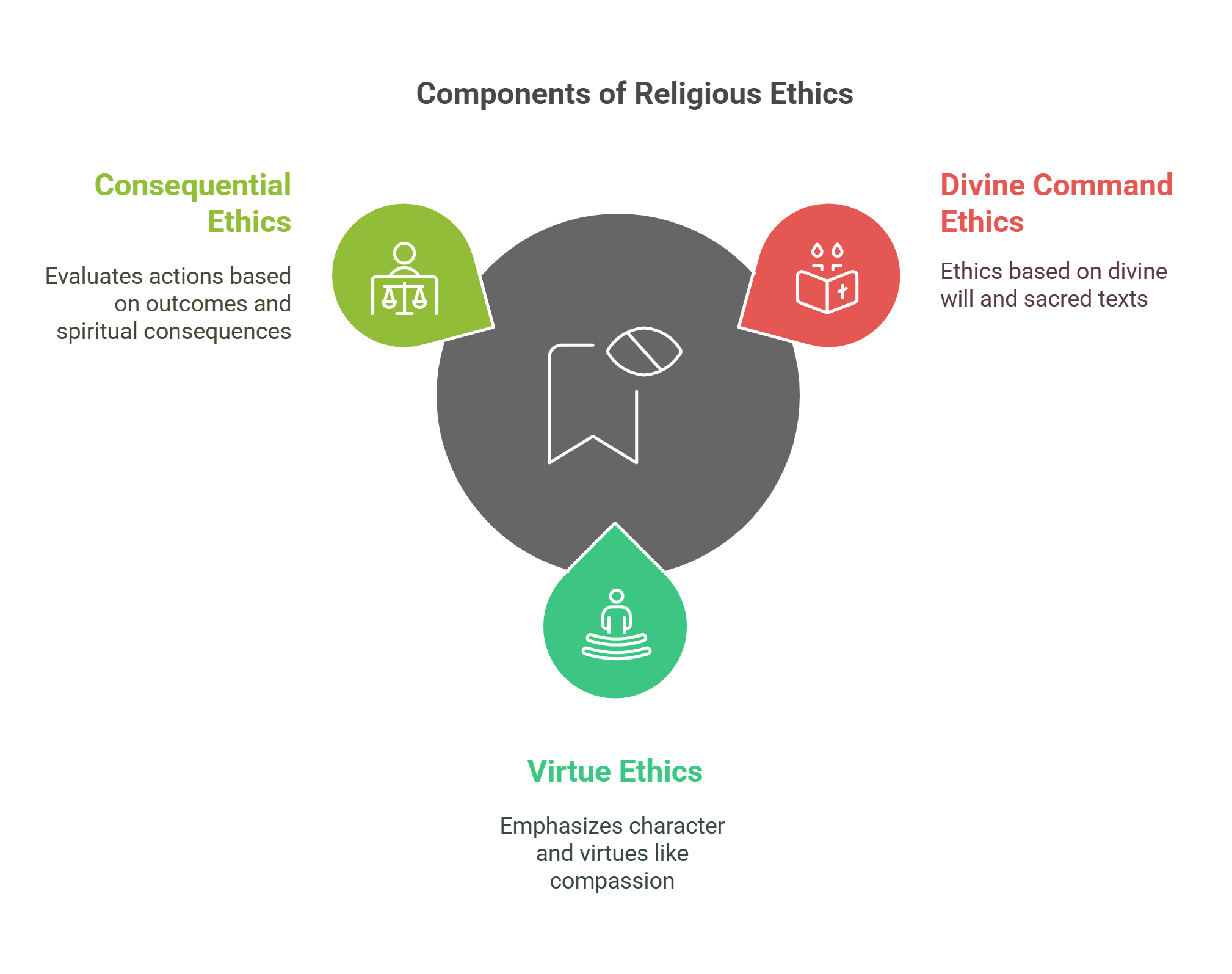
7. Pilgrimage
Detailed Explanation: A pilgrimage is a journey undertaken for spiritual growth, devotion, or penance, often to a sacred site associated with a particular religion. Pilgrimages symbolize physical and spiritual quests for enlightenment, forgiveness, or connection with the divine.
- Major Pilgrimages:
- Islam: The Hajj to Mecca, one of the Five Pillars of Islam, is mandatory for all Muslims who are physically and financially able.
- Hinduism: Visits to Varanasi or the Char Dham to seek blessings and purification.
- Christianity: The Camino de Santiago in Spain or pilgrimages to the Vatican.
- Key Functions:
- Reinforces communal identity among pilgrims.
- Provides a transformative experience through self-reflection and acts of devotion.
Explained Simply: A pilgrimage is like a spiritual journey where the path and destination both hold sacred meaning.
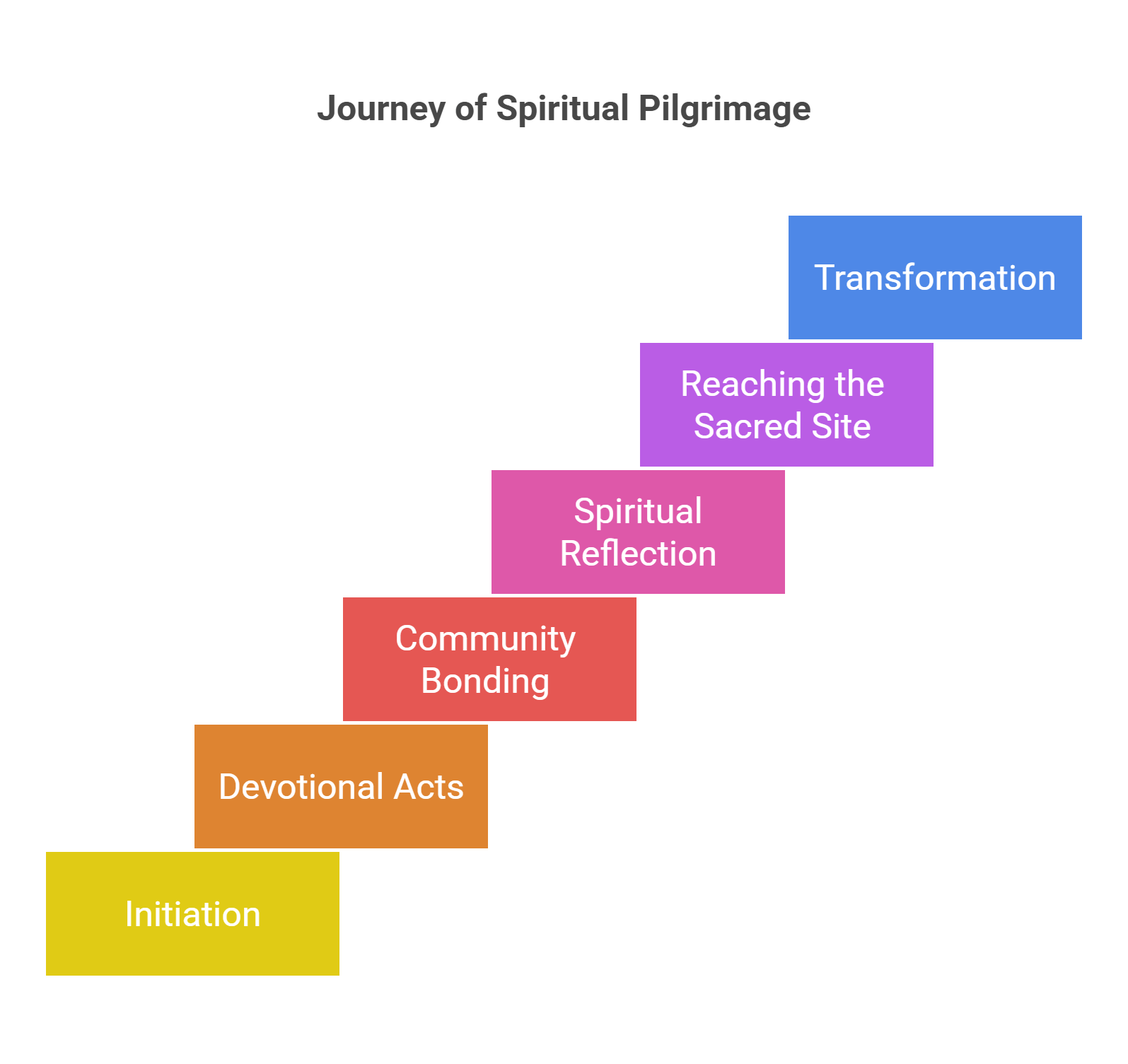
8. Shamanism
Detailed Explanation: Shamanism is a spiritual practice found in Indigenous cultures, where shamans act as intermediaries between the human and spirit worlds. They use rituals, altered states of consciousness, and healing practices to address individual and communal needs.
- Core Beliefs:
- The natural world is infused with spirits.
- Shamans can access the spiritual realm through drumming, chanting, or hallucinogenic substances.
- Emphasis on healing, divination, and maintaining balance within the community.
- Applications:
- Still practiced in Indigenous traditions worldwide, such as the Siberian shamans or the Ayahuasca rituals in South America.
Explained Simply: Shamanism is like having a spiritual guide who connects the seen and unseen worlds to heal and protect.
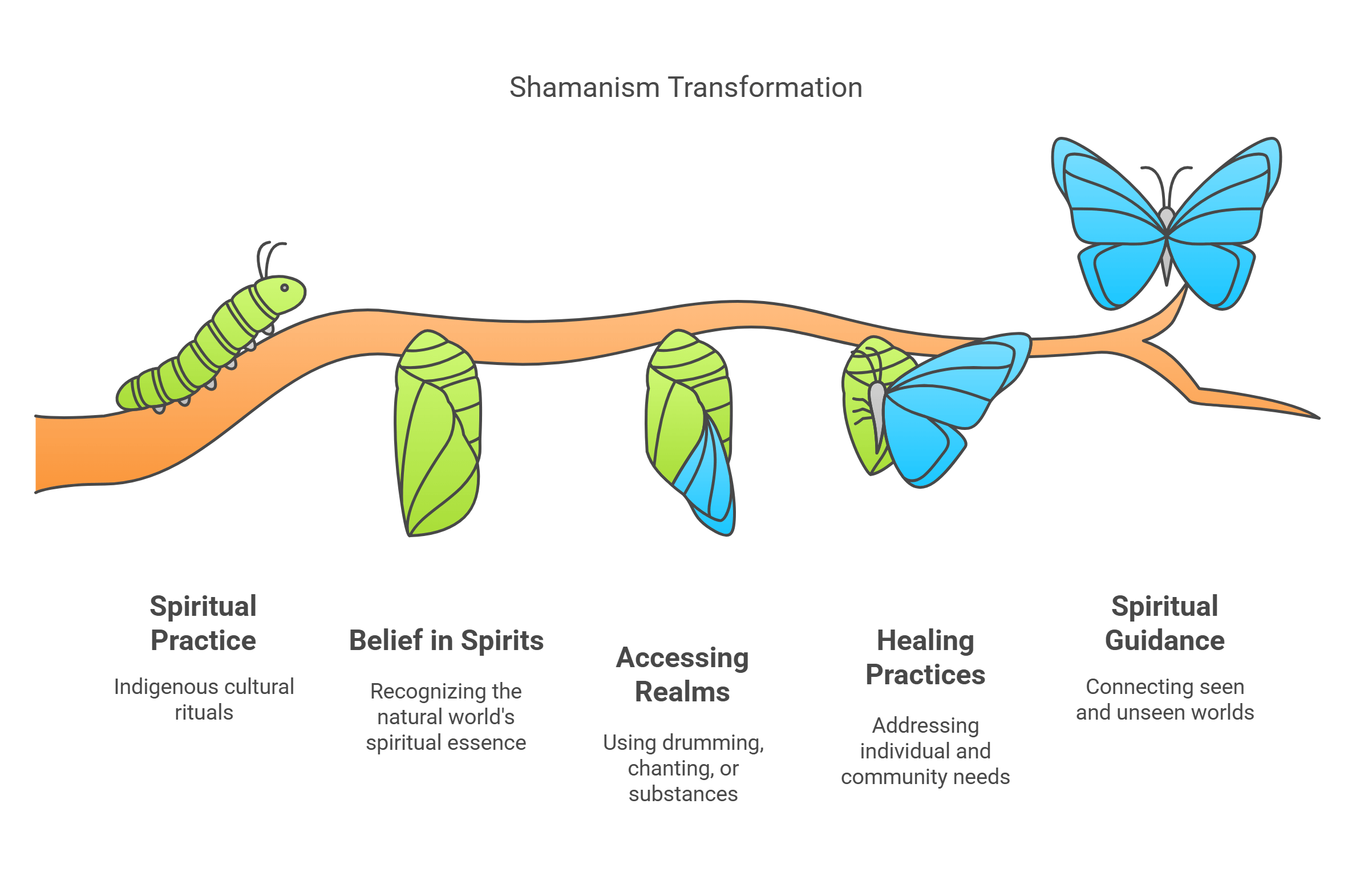
9. Religious Syncretism
Detailed Explanation: Religious syncretism refers to the blending of beliefs, practices, and traditions from different religions, often resulting from cultural contact, colonization, or migration.
- Examples of Syncretism:
- Voodoo: A fusion of West African spiritual practices with Christianity.
- Day of the Dead (Mexico): Combines Indigenous traditions honoring ancestors with Catholic influences.
- Sikhism: Merges elements of Hinduism and Islam while establishing its unique identity.
- Impact:
- Promotes cultural integration and diversity.
- Sometimes criticized for diluting original traditions or beliefs.
Explained Simply: Religious syncretism is like blending two colors to create a new, unique shade of spirituality.
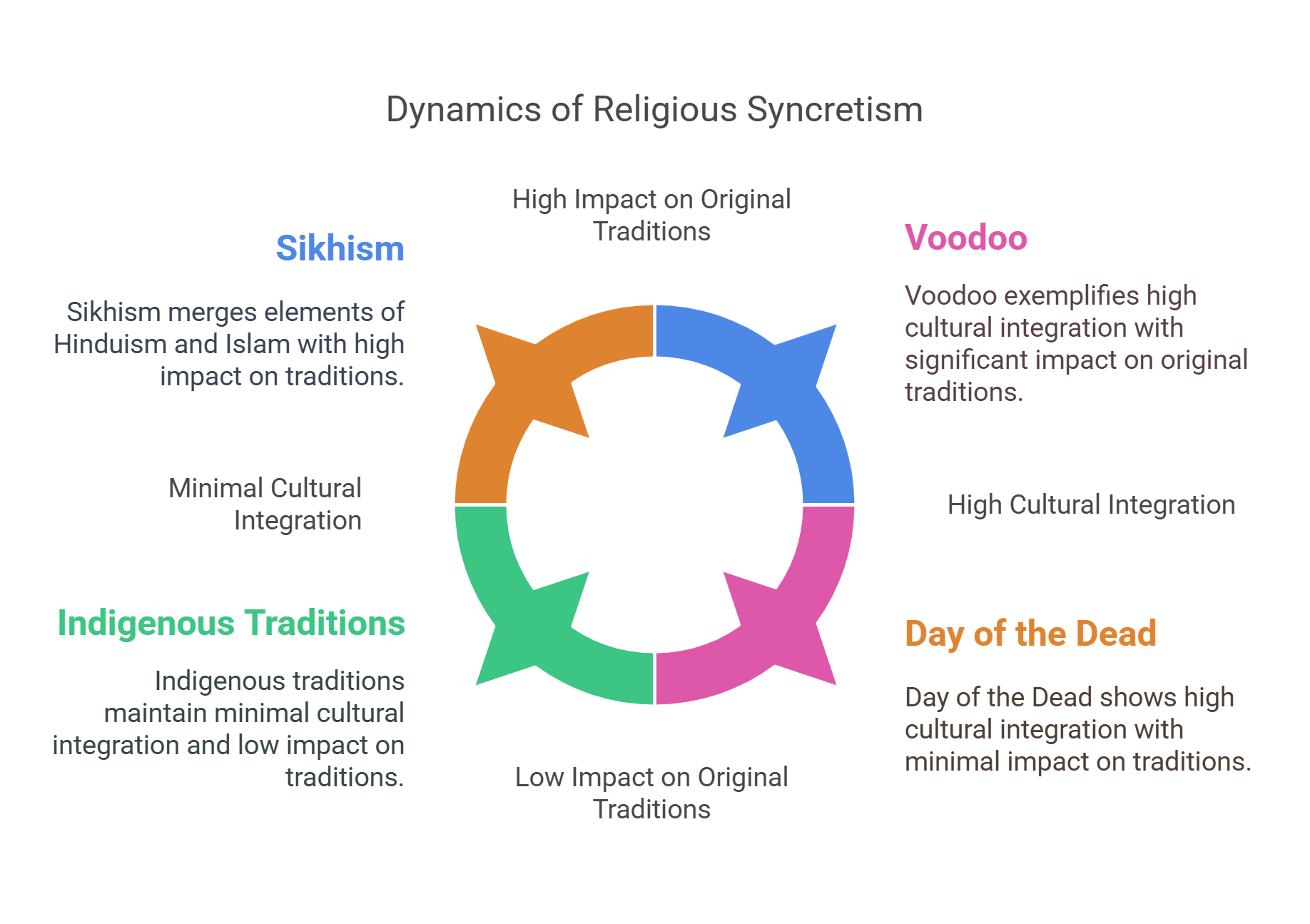
10. Faith vs. Reason
Detailed Explanation: The debate between faith and reason explores the relationship between religious beliefs based on faith and knowledge derived from rational thought and evidence.
- Key Perspectives:
- Faith-Driven View: Holds that religious truths transcend human logic (e.g., miracles or divine revelations).
- Reason-Driven View: Advocates for evidence and rationality in understanding the world (e.g., Enlightenment thought).
- Harmonized View: Argues that faith and reason can coexist, with reason enriching understanding of faith (e.g., Thomas Aquinas).
- Historical Context:
- Medieval Era: Faith dominated knowledge systems, with the Church guiding learning.
- Enlightenment: Emphasized reason and empirical science, challenging faith-based explanations.
- Example: Galileo’s conflict with the Catholic Church over heliocentrism illustrates the tension between faith and reason in scientific discovery.
Explained Simply: Faith is like trusting a bridge you cannot see, while reason is like inspecting the bridge before crossing.
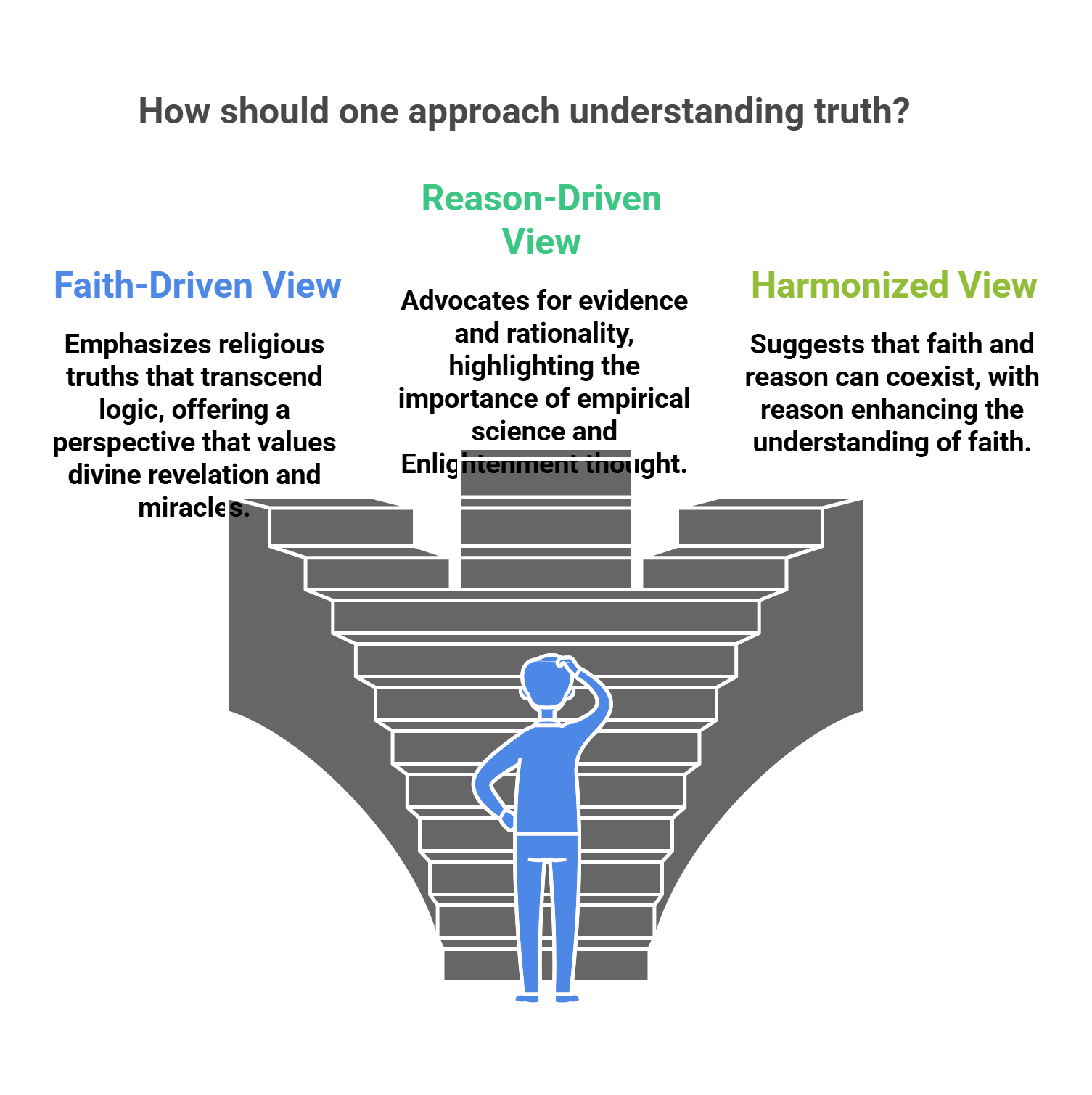
✨ Conclusion
Comparative religions reveal the diverse ways humanity seeks meaning, morality, and connection with the divine. By exploring concepts like pilgrimage, shamanism, and religious syncretism, readers gain a deeper understanding of the interplay between belief systems and cultures. This field enriches our appreciation of the spiritual and philosophical diversity that shapes societies.










